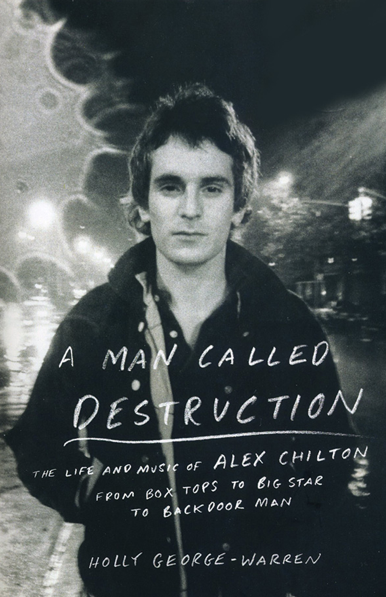Book Review: Alex Chilton — the Ultimate Cult King of Rock and Roll

Even if you’ve never heard of the late pioneering indie-rock genius Alex Chilton, chances are you know at least one or two of his songs.
As the 16-year-old lead singer for the Box Tops, he scored an international Number One hit in 1967 with “The Letter,” a gritty slice of R&B that still gets plenty of regular airplay on classic rock stations.
And, unless you’ve been living in a cave, you are no doubt familiar with “In The Street,” the ubiquitous Chilton song covered by Cheap Trick and used as the theme song of That ‘70s Show.
But there is more to the man than those two tunes, as author Holly George-Warren points out in her authoritative new biography, A Man Called Destruction (Viking). Much more.
After Chilton left the Box Tops, he formed Big Star, a legendary cult band who many consider to be Ground Zero for American “power pop,” the melody-driven sub-genre that has been a staple of indie rock for decades. The irony is that despite the group’s fantastic songs and jangly guitar arrangements, Big Star never became big stars.
Due to various record company snafus and poor distribution, the band broke up before an audience was able to discover their three brilliant albums, #1 Record (1972), Radio City (1974) and 3rd/Sister Lovers (1978). It was only years later, through word-of-mouth, enthusiastic music fanzines and groups like R.E.M., who regularly sang their praises, that Big Star eventually received some much-deserved recognition.
But by the time the rock world caught up, Chilton was already heading in a completely different direction—one that he would pursue until his death in 2010. Despite the demand for him to return to the slick, ethereal beauty of Big Star, Chilton almost perversely ran in the opposite direction, playing music so spontaneous, idiosyncratic and minimalist it often bordered on punk.
All the latest guitar news, interviews, lessons, reviews, deals and more, direct to your inbox!
Holly George-Warren’s book goes a long way in explaining the Memphis musician’s often mystifying left turns. While Chilton has often been dismissed as an “eccentric” or ”bewildering,” A Man Called Destruction suggests there are other reasons for his career choices. Unlike many of his peers, Chilton simply preferred art to commerce—even if it meant having to wash dishes or drive a cab to make ends meet. He had a vision, and it would not be compromised.
As he said in one interview: “Somewhere along the line I figured out that if you only press a hundred copies of a record, then eventually it will find its way to the hundred people in the world who want it the most.”
In recent years, the cult of Chilton has not abated, and with the release of Warren’s thoughtful and fastidiously researched book, those ranks will surely grow. A hundred copies? It was unlike Alex to be conservative, but he could’ve added a couple more zeros to the end of that number.
Brad Tolinksi is the editor-in-chief of Guitar World magazine.
A long time ago in a galaxy far, far away Brad was the editor of Guitar World from 1990 to 2015. Since his departure he has authored Eruption: Conversations with Eddie Van Halen, Light & Shade: Conversations with Jimmy Page and Play it Loud: An Epic History of the Style, Sound & Revolution of the Electric Guitar, which was the inspiration for the Play It Loud exhibition at the Metropolitan Museum of Art in New York City in 2019.

